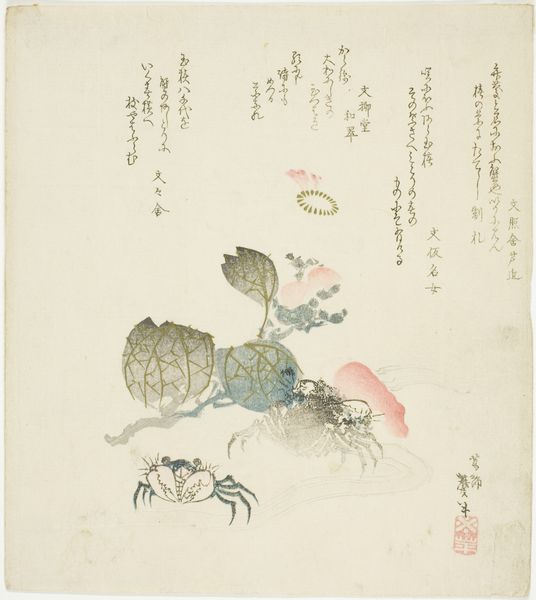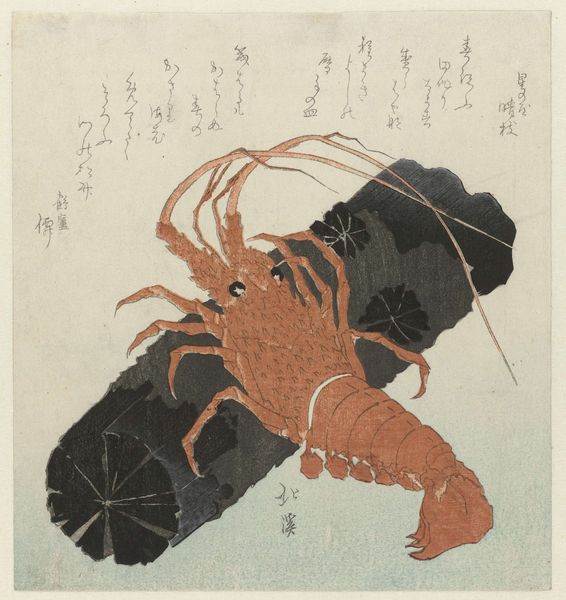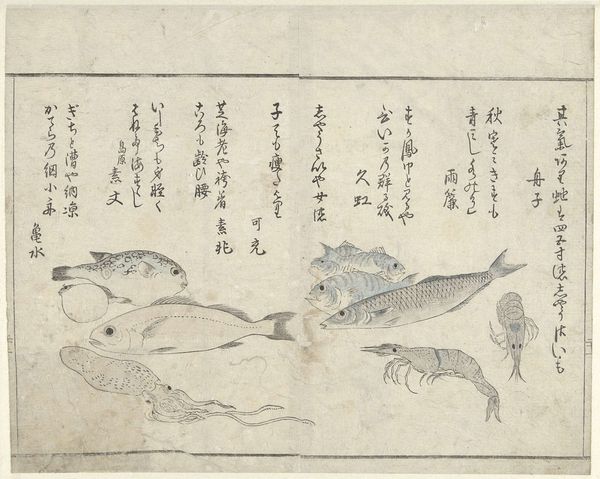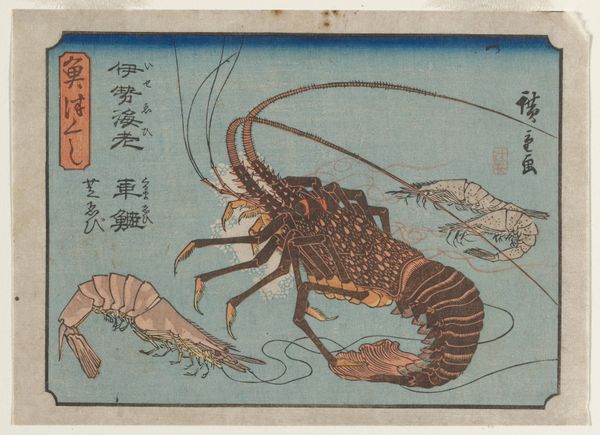
print, watercolor
#
water colours
# print
#
asian-art
#
ukiyo-e
#
watercolor
#
watercolour illustration
#
watercolor
Dimensions: height 125 mm, width 158 mm
Copyright: Rijks Museum: Open Domain
Curator: This is Sakuragawa Jihinari's "River Shrimp with Sake Cup," created in 1823, an intriguing work rendered in watercolor. Editor: Mmm, sparse but somehow abundant! It's like a haiku… visually a little melancholy, don't you think? Curator: The composition is deceptively simple. The crustacean and cup, placed asymmetrically, create a visual tension resolved by the calligraphic elements framing them. Note the meticulous detail in the shrimp’s anatomy, contrasted with the almost ethereal rendering of the sake cup. It reveals the interplay of precision and suggestion. Editor: Suggestion is key, right? The shrimp looks vulnerable, almost sacrificed for the sake…no pun intended! Its color against that plain ground speaks of…well, imminent demise. Does it feel celebratory to you? Curator: Celebration may not be the only element at play here. The formal qualities—the muted palette, the balance between detail and negative space—evoke a sense of ephemeral beauty characteristic of the ukiyo-e tradition. Each brushstroke communicates purpose. The shrimp becomes a semiotic emblem within a larger system of coded gestures. Editor: Right! But encoded gestures… for who, ultimately? You say emblems. I see symbols for things so human: transient joy, shared moments that exist… then vanish like the last drop of sake. Beautiful...bittersweet! Curator: Perhaps the painting is deliberately ambivalent, designed to stimulate varied personal interpretation while simultaneously existing as an aesthetic object worthy of analysis unto itself. Editor: Which is what makes it work, isn't it? Form, and feeling. Thought and emotion entangled so neatly. I'm left pondering the unseen story behind the meal, and it all seems delicately balanced. Curator: A delicate balance captured expertly. An evocative synthesis of image and intention indeed.
Comments
No comments
Be the first to comment and join the conversation on the ultimate creative platform.













